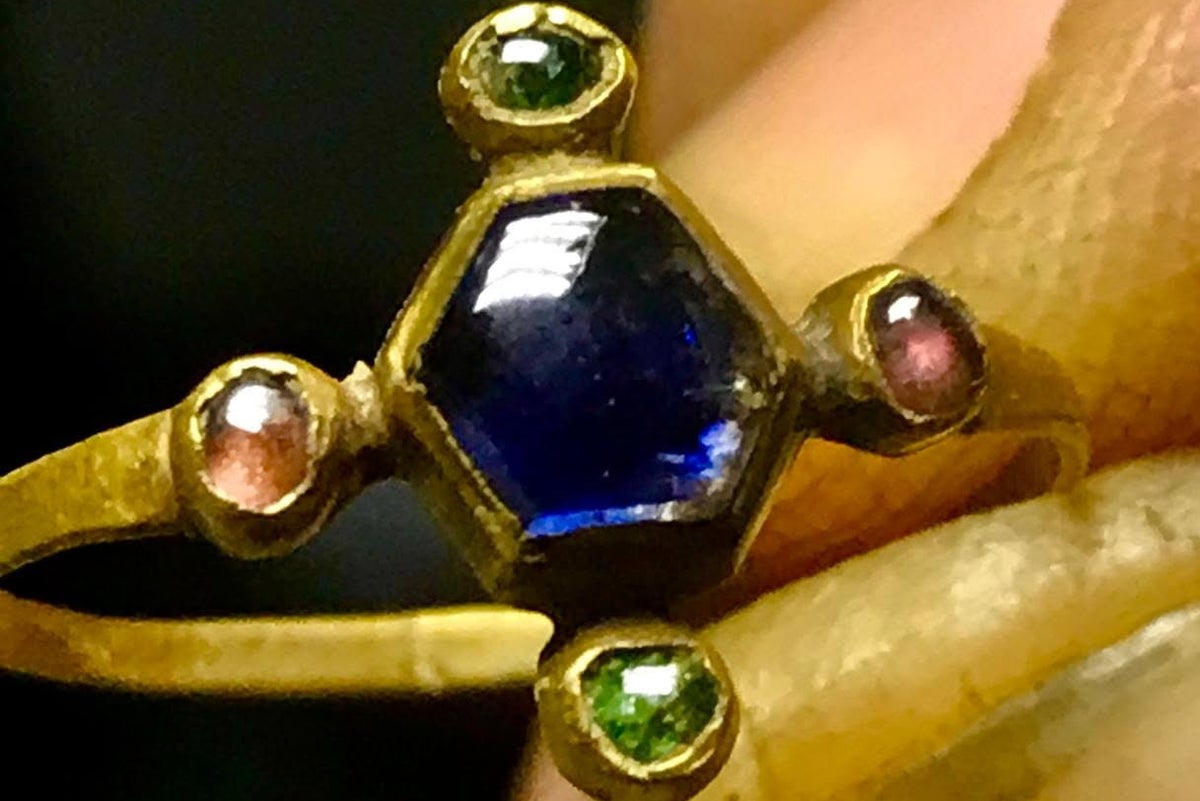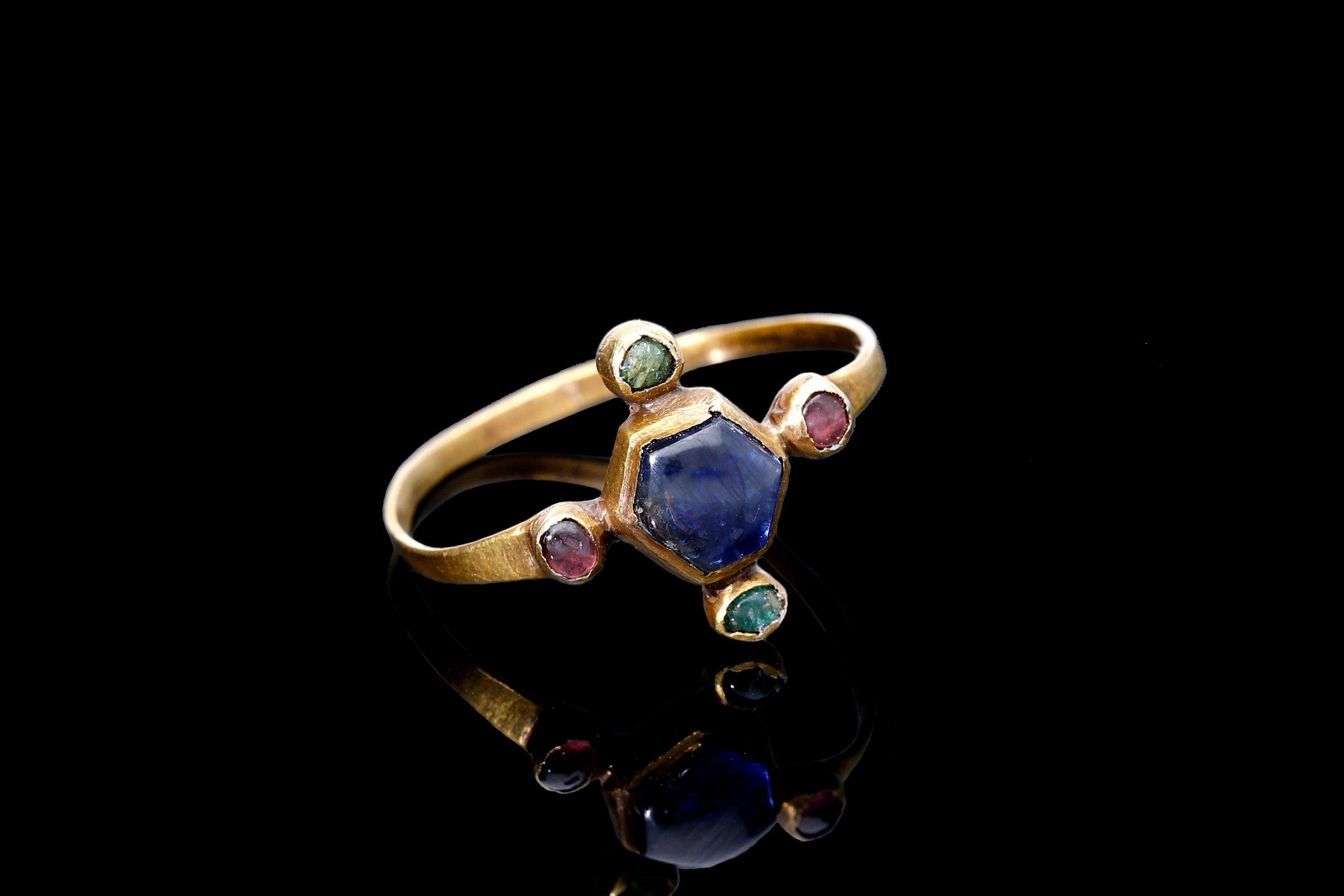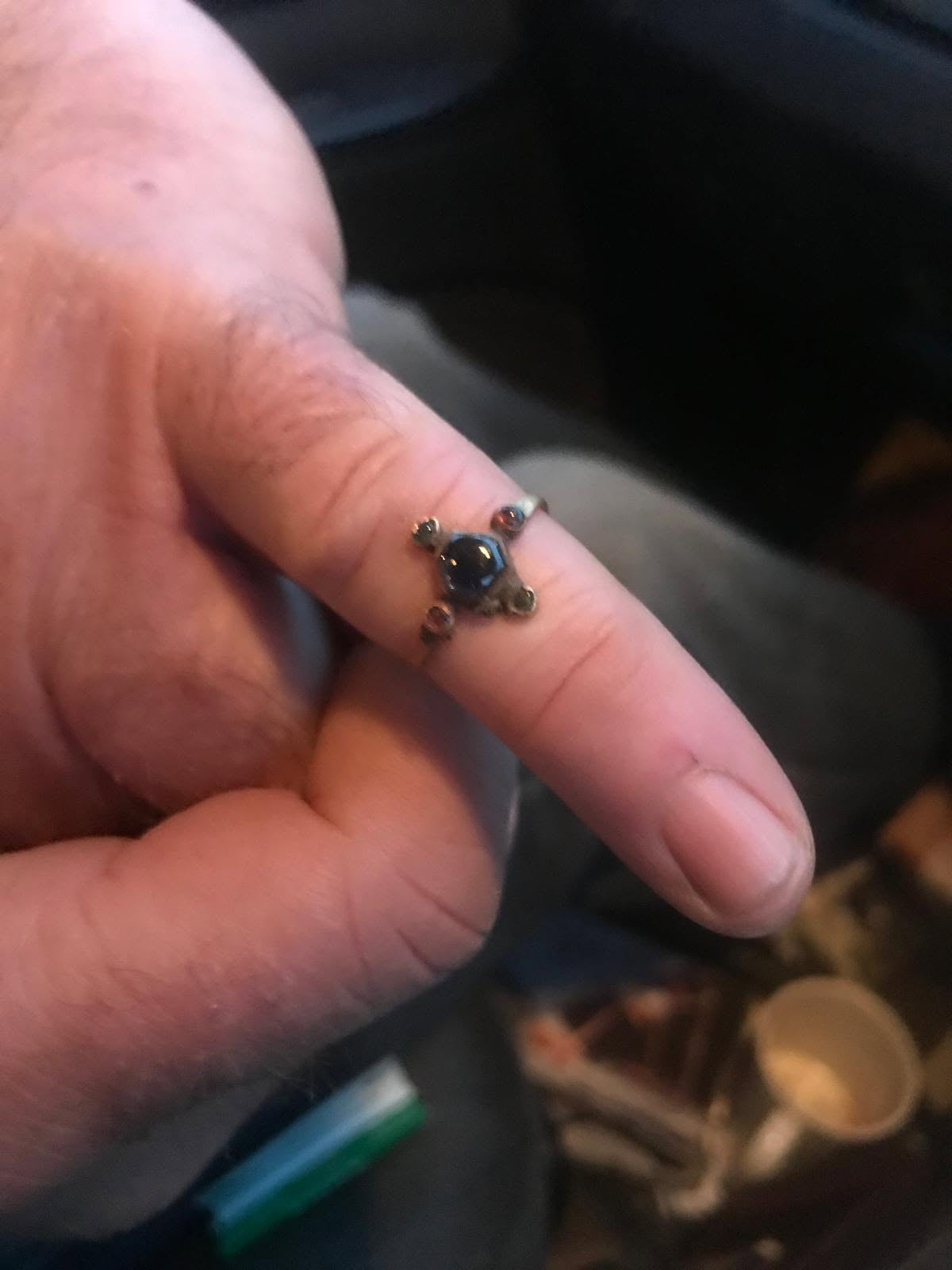
A jewelled medieval bishop’s ring, unearthed from a muddy field in Norfolk by a metal detectorist is expected to fetch more than £15,000 at auction.
The artefact was discovered by retired firefighter Mark Sell on a cold but sunny afternoon in November 2019 on King Row in the village of Shipdham - a location steeped in history and mentioned in the Domesday Book of 1086.
Experts believe the rare artefact dates back to the late 12th or early 13th century.
“I was amazed to see a thin line of gold in the clod of mud that I had dug up, and as I wiped away the mud, I could see the bezel of a medieval gold jewelled ring,” the 63-year-old from Swaffham said.
“I could also see that the ring was complete with all of the original jewels still in place and was in pristine condition.”

The artefact is to be sold at auction at Noonans Mayfair in London on March 26, and has a pre-auction estimate of £15,000 to £18,000.
“I had been on the field a couple of times before but had not found anything of importance and had been detecting for a couple of hours with a friend, using my XP Deus metal detector, when just before it started to go dark I got a faint signal and dug down about nine inches to find what has to be the best item I have found so far,” he said.
Mr Sell reported the find to the landowner and took it to show him and his family before it was deposited with his local Finds Liaison Officer.
Norwich Castle Museum and the British Museum were involved in the treasure process and the British Museum put the ring on temporary display while in its care.

Norwich Castle Museum had also shown interest in acquiring the ring for its permanent display, Noonans said.
Laura Smith, jewellery expert at Noonans, said that the village of Shipdham – where the ring was found – was “well established by the time of the Norman Conquest”.
She said the village was “extensively detailed in the Domesday Book of 1086, and at that time recorded as being within the largest 20 per cent of settlements in England”.
“During the reign of Henry III (1207-1272) the Bishop of Ely built a manor house at Shipdham, the moat in evidence on 19th century maps,” said Ms Smith.
She said that this form of ring could be “securely dated to the late 12th or early 13th century, and is associated with the bishopric”.
This type of medieval ring is characterised by a “principal cabochon stone, usually a sapphire, surrounded by smaller collet set satellite stones – garnets or rubies, and emeralds”, she added.
“Other similar rings include one belonging to Walter de Gray, the wealthy and powerful archbishop of York – archbishop from 1215 until his death in 1255 – which is on display at York Minster; as well as the Bishop of Chichester’s Ring and the Whithorn Cathedral ring,” she said.
Proceeds from the sale of the King Row Ring will be shared between Mr Sell and the landowner.







